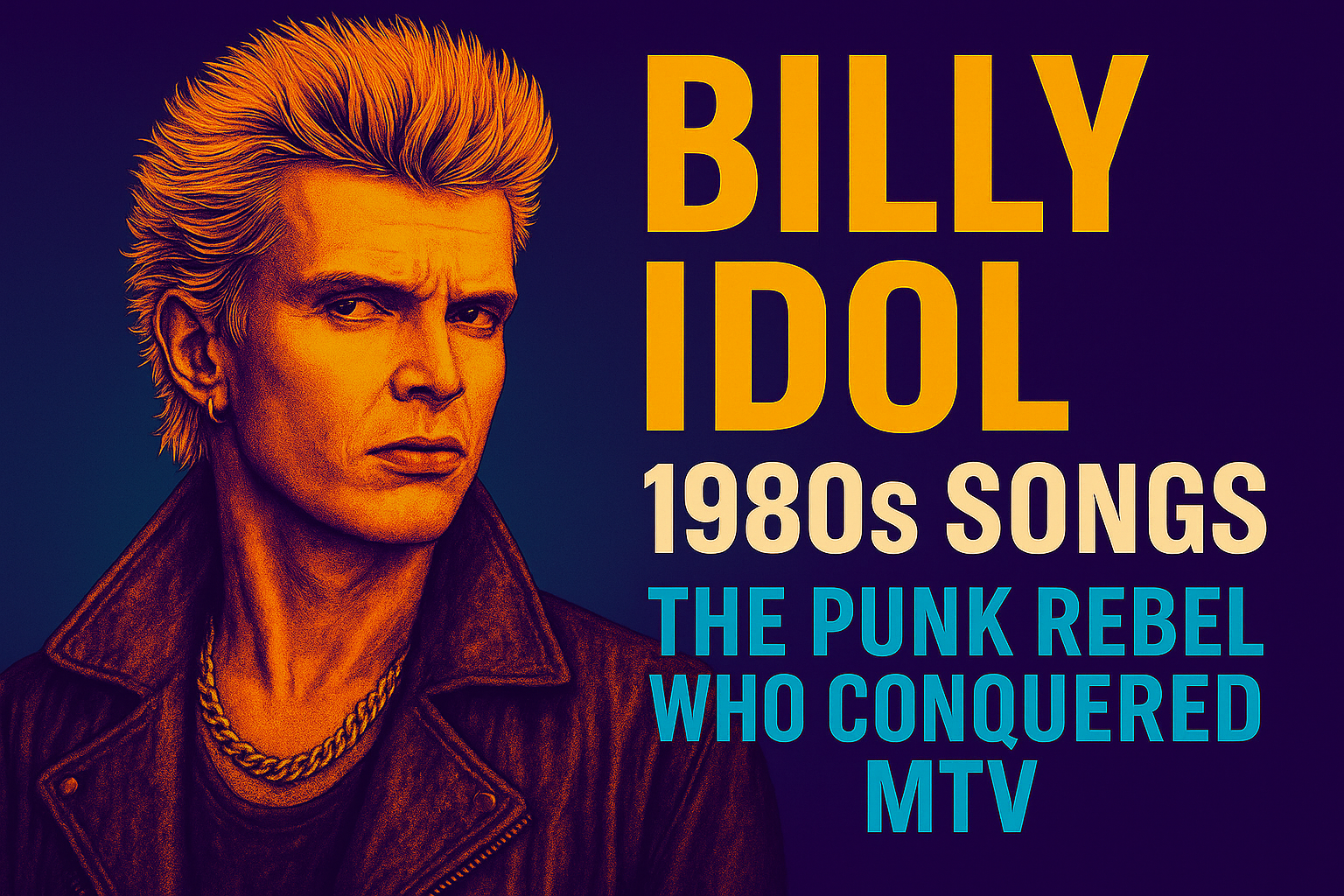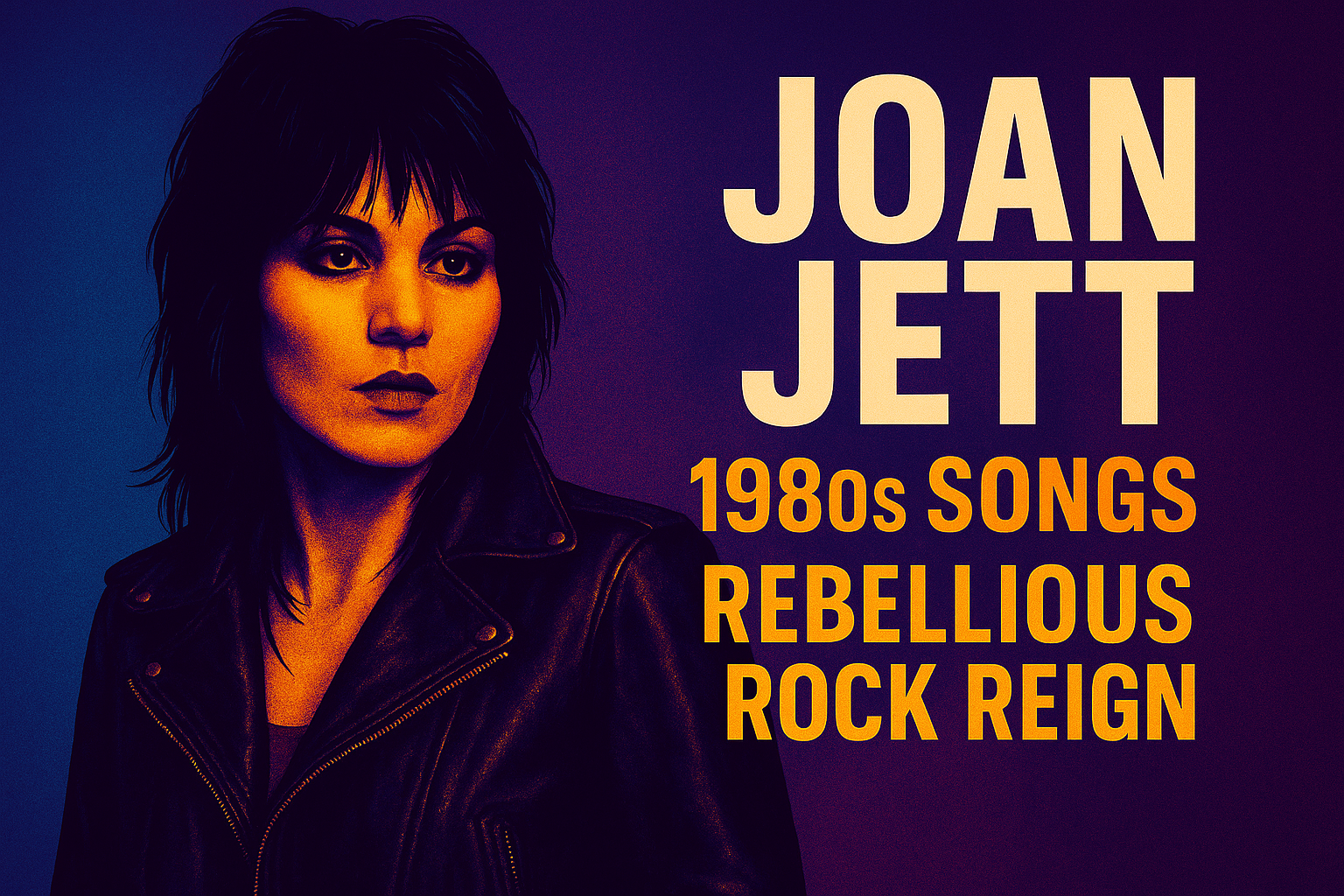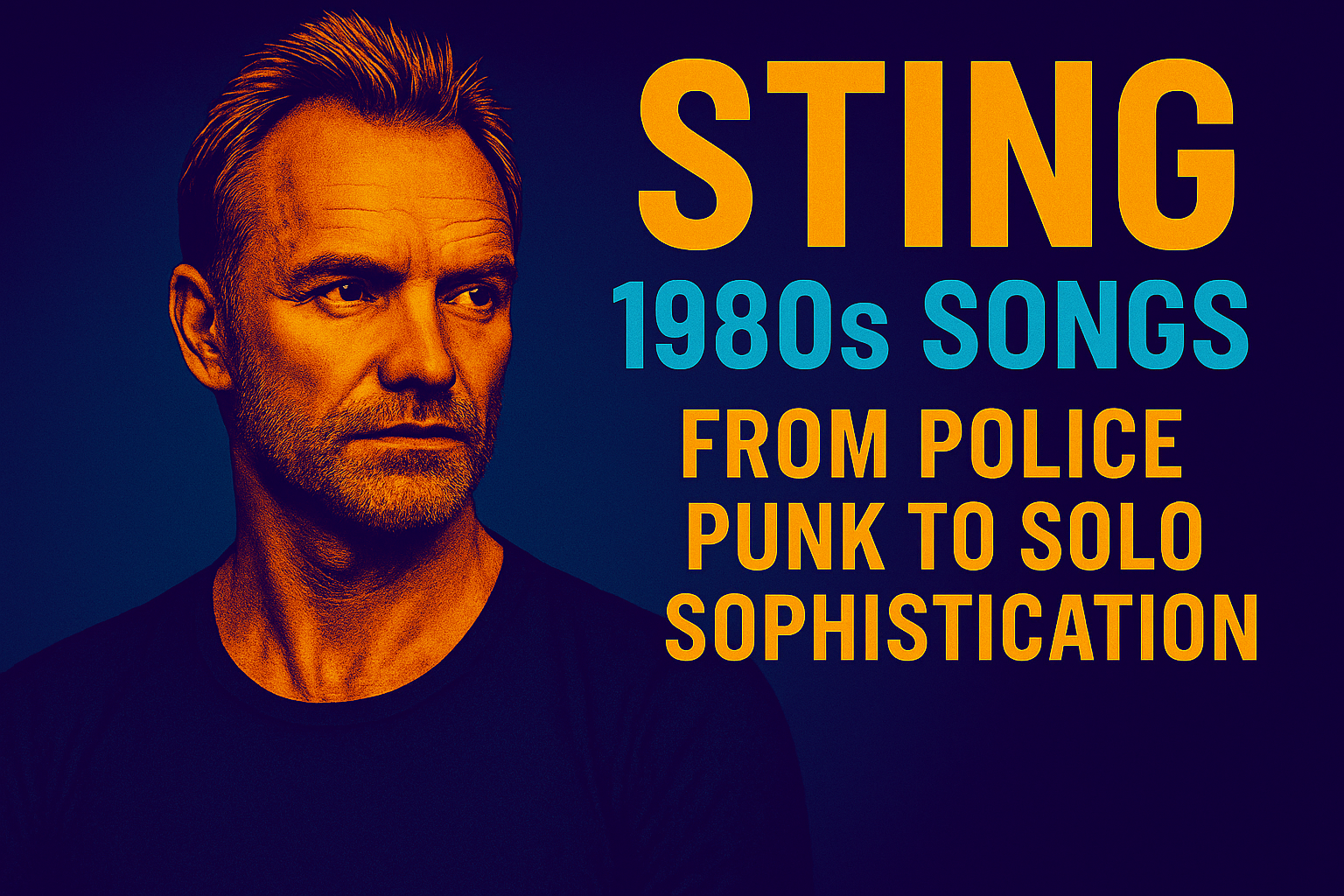Picture this: it’s 1983, you’re flipping through MTV, and suddenly this platinum-haired, leather-clad rebel appears on your screen, snarling “White Wedding” while smashing things in a church. That sneer, that attitude, that perfect combination of danger and pop sensibility – this wasn’t just music, this was rebellion with a perfect hook.
If you’re searching for the ultimate Billy Idol 1980s songs that transformed a British punk into an MTV superstar, you’ve struck platinum. These Billy Idol 1980s songs didn’t just bridge the gap between punk attitude and pop accessibility – they created an entirely new template for what a rock star could be in the video age. From London’s punk clubs to American arenas, Billy Idol proved that rebellion could be both authentic and incredibly catchy.
As someone who witnessed Billy Idol’s meteoric rise through the neon-soaked decade, I can tell you that his success wasn’t just about attitude (though that sneer was legendary). Billy had the rare ability to maintain punk’s rebellious spirit while crafting songs that could fill dance floors and dominate radio. He was dangerous enough to be cool, but melodic enough to be massive.
1. White Wedding – Billy Idol (1982)
The song that made wedding receptions infinitely more dangerous. “White Wedding” was pure punk-pop perfection – Billy’s snarling vocals over Steve Stevens’ brilliant guitar work created something that was both menacing and irresistibly catchy. That “nice day for a white wedding” delivery was pure attitude.
The track’s subversive take on traditional romance, combined with its undeniable hook, made it the perfect introduction to Billy’s brand of accessible rebellion. The music video featuring Billy terrorizing a wedding ceremony became an MTV classic.
2. Rebel Yell – Billy Idol (1983)
“More, more, more!” Billy’s battle cry became the anthem for anyone who refused to settle for less. “Rebel Yell” was pure adrenaline – a celebration of desire and defiance that captured the essence of ’80s excess while maintaining genuine punk edge.
Steve Stevens’ guitar heroics provided the perfect backdrop for Billy’s primal vocals, creating something that was both sophisticated and completely wild. The song proved that punk attitude could coexist with arena-rock ambitions.
3. Dancing with Myself – Billy Idol (1981)
Originally recorded with Generation X, but Billy’s solo version became the definitive statement of ’80s independence. “Dancing with Myself” was both literally about dancing alone and metaphorically about self-reliance – perfect for the MTV generation.
The song’s celebration of solitary pleasure over infectious new wave rhythms created an anthem for introverts and rebels alike. Billy made dancing alone sound like the coolest thing in the world.
4. Eyes Without a Face – Billy Idol (1984)
Billy’s most haunting and beautiful composition proved he could handle vulnerability without losing his edge. “Eyes Without a Face” was atmospheric and mysterious, showcasing a different side of his artistry while maintaining his distinctive vocal style.
The track’s blend of romanticism and darkness, enhanced by ethereal production and Steve Stevens’ tasteful guitar work, showed that Billy’s talents extended far beyond punk-pop anthems.
5. Flesh for Fantasy – Billy Idol (1984)
Seduction set to a hypnotic groove that made dancing feel dangerous. “Flesh for Fantasy” was Billy at his most alluring, using his punk credentials to add edge to what was essentially a dance track. The result was both sophisticated and completely primal.
The song’s exploration of desire and fantasy over that irresistible rhythm proved that Billy could master any style while maintaining his essential rebellious spirit.
6. Mony Mony (Live) – Billy Idol (1987)
Billy’s transformation of Tommy James’ ’60s hit into a punk-rock celebration was pure genius. The live version captured the raw energy of Billy’s performances while adding crowd participation that made every listener feel part of the party.
The track’s infectious energy and Billy’s charismatic delivery proved that great songs could be reinterpreted for new generations without losing their essential appeal. Sometimes the best way to honor the past is to make it completely your own.
7. To Be a Lover – Billy Idol (1986)
Billy’s declaration of romantic intention was delivered with typical swagger and attitude. “To Be a Lover” combined his punk edge with genuine romantic sentiment, creating something that was both tough and surprisingly tender.
The song showed Billy’s evolution as both a performer and songwriter, proving he could handle traditional romantic themes while maintaining his rebellious credibility.
8. Catch My Fall – Billy Idol (1983)
A deeper exploration of vulnerability and trust wrapped in Billy’s signature sound. “Catch My Fall” showcased his ability to handle more complex emotional territory while maintaining the energy and attitude that made him famous.
The track’s blend of personal confession with driving rock energy proved that punk sensibility could enhance rather than diminish emotional honesty.
The Punk Who Conquered Pop
These Billy Idol 1980s songs represent one of the most successful transitions from underground punk to mainstream stardom in music history. Billy managed to bring punk attitude to the masses without diluting its essential rebellious spirit – a balancing act that few artists have managed successfully.
What made Billy’s ’80s success so remarkable was his complete commitment to his persona. The platinum hair, the leather jacket, the sneer – these weren’t just image choices, they were essential parts of his artistic expression. Billy understood that in the MTV era, authenticity meant being completely yourself, even if that self was larger than life.
His partnership with guitarist Steve Stevens was crucial to his success. Stevens provided the musical sophistication that elevated Billy’s songs from simple punk anthems to complex, layered compositions that worked on multiple levels.
Rebellion Meets Accessibility
Billy’s genius was making punk attitude accessible to mainstream audiences without betraying its essential spirit. His songs maintained the energy and defiance of punk while incorporating the melodic sensibilities that made them radio-friendly.
The visual component of Billy’s artistry was just as important as the musical elements. His music videos weren’t just promotional tools – they were extensions of his artistic vision, creating a complete multimedia experience that defined what rock stardom could be in the video age.
Cultural Impact
Billy Idol’s influence on ’80s culture extended far beyond music. His look became iconic, his attitude became a template for rock rebellion, and his songs became anthems for anyone who wanted to feel dangerous while remaining fundamentally good-natured.
These Billy Idol 1980s songs proved that punk’s original rebellious spirit could evolve and adapt without losing its power. They showed that attitude and accessibility weren’t mutually exclusive, and that the best rock music often comes from artists who refuse to choose between authenticity and commercial appeal.
Billy’s success paved the way for countless artists who wanted to bring alternative sensibilities to mainstream audiences. He proved that you could be both a rebel and a pop star, both dangerous and lovable, both punk and accessible.
Which Billy Idol anthem still makes you want to spike your hair and grab a leather jacket? Share your favorite moment of ’80s rebellion in the comments below, and if this list brought back some serious punk-pop nostalgia, crank it up and share it with your fellow rebels!


